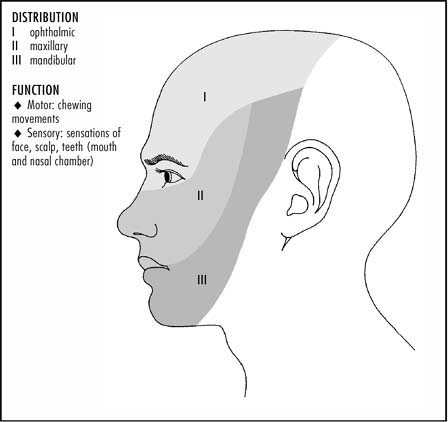Trigeminal neuralgia
Also called tic douloureux, trigeminal neuralgia is a painful disorder of one or more branches of the fifth cranial (trigeminal) nerve that produces paroxysmal attacks of excruciating facial pain precipitated by stimulation of a trigger zone.
It occurs mostly in people over age 40, in women more often than men, and on the right side of the face more often than the left. Trigeminal neuralgia can subside spontaneously, with remissions lasting from several months to years.
Causes
Although the cause remains undetermined, trigeminal neuralgia may:
reflect an afferent reflex phenomenon located centrally in the brain stem or more peripherally in the sensory root of the trigeminal nerve
be related to compression of the nerve root by posterior fossa tumors, middle fossa tumors, or vascular lesions (subclinical aneurysm), although such lesions usually produce simultaneous loss of sensation
occasionally be a manifestation of multiple sclerosis or herpes zoster.
Whatever the cause, the pain of trigeminal neuralgia is probably produced by an interaction or short-circuiting of touch and pain fibers.
Signs and symptoms
Typically, the patient reports a searing or burning pain that occurs in lightning-like
jabs and lasts from 1 to 15 minutes (usually 1 to 2 minutes) in an area innervated by one of the divisions of the trigeminal nerve, primarily the superior mandibular or maxillary division.
jabs and lasts from 1 to 15 minutes (usually 1 to 2 minutes) in an area innervated by one of the divisions of the trigeminal nerve, primarily the superior mandibular or maxillary division.
Stay updated, free articles. Join our Telegram channel

Full access? Get Clinical Tree



